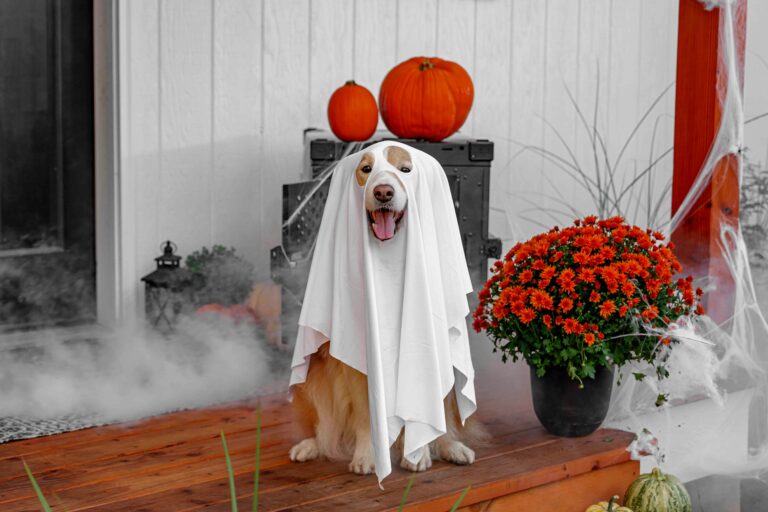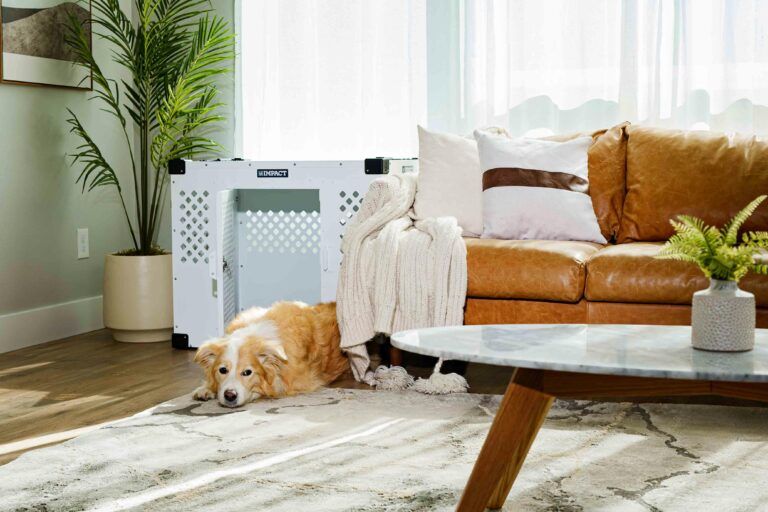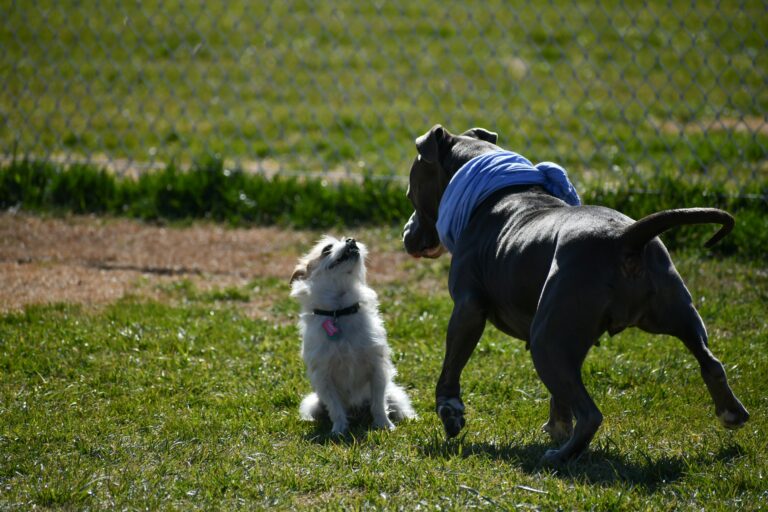Master Guide to Dog Escape Rooms: From Basic Puzzles to Advanced Problem-Solving
Looking to unlock your dog’s hidden genius? Dog escape rooms are the latest trend in canine enrichment that combines mental stimulation with engaging problem-solving activities. These innovative puzzle games go beyond traditional hide-and-seek, offering a structured approach to challenge your furry friend’s cognitive abilities. Whether you’re dealing with a bored pup or seeking to enhance your dog’s problem-solving skills, escape rooms provide the perfect solution. From simple treat-finding missions to complex multi-step challenges, dog escape rooms can be tailored to any skill level. They not only prevent destructive behavior but also: • Boost mental stimulation and cognitive development • Strengthen the bond between you and your pet • Provide structured enrichment activities • Combat boredom and reduce anxiety Ready to transform your home into an exciting puzzle paradise for your four-legged friend? Let’s explore how to create engaging escape room challenges that will keep your dog’s tail wagging and mind working.

Setting Up Your First Dog Escape Room
Essential Equipment and Safety Guidelines
Before diving into creating your dog’s first escape room adventure, gathering the right equipment is crucial. Start with basic interactive toys and puzzle games that match your dog’s skill level. A good starter kit should include a snuffle mat, which encourages natural foraging behavior, and simple food puzzles that dispense treats when solved.
Always prioritize safety by choosing durable, dog-safe materials. Avoid items with small parts that could be swallowed or sharp edges that might cause injury. Keep a close eye on your dog during their first few sessions to ensure they’re interacting safely with the equipment.
Creating the Perfect Environment
Setting up the right environment is key to a successful dog escape room experience. Choose a quiet, enclosed space free from distractions where your dog can focus on problem-solving. A spare room or sectioned-off area of your living room works well.
Start by arranging the puzzles in a logical sequence, from simple to more challenging. Place the snuffle mat in an easily accessible spot as a warm-up activity. Follow this with more complex food puzzles that require different solving techniques.
Consider these environmental factors for optimal engagement:
– Proper lighting to help your dog see the challenges clearly
– Comfortable room temperature
– Non-slip flooring for safe movement
– Easy access to fresh water
– Adequate space between different puzzle stations
Remember to rotate interactive toys regularly to maintain interest and prevent your dog from memorizing solutions too quickly. This keeps the experience fresh and mentally stimulating while encouraging continued engagement with each new challenge.
Beginner-Level Puzzle Challenges
Hidden Treat Puzzles
Start your dog’s puzzle-solving journey with engaging hidden treat challenges. These brain game activities are perfect for beginners and help develop their natural foraging instincts. Place treats under lightweight cups or boxes, encouraging your furry friend to investigate and discover rewards.
Begin with transparent containers so your dog can see the treats, then gradually progress to opaque ones. This simple games of hide and seek builds confidence and teaches persistence. Remember to praise your pup enthusiastically when they successfully find the treats.
For an added challenge, try using a snuffle mat – a textured mat with hidden pockets where you can conceal treats. This pet puzzle not only provides mental stimulation but also slows down eating, promoting better digestion.
Basic Problem-Solving Games
Introduce your dog to interactive puzzle toys that require simple actions to release treats. Start with toys that only need basic movements like pushing or pawing. These entry-level challenges help build your dog’s problem-solving confidence without causing frustration.
Create DIY puzzles using muffin tins and tennis balls. Place treats in the tin’s cups and cover them with balls. This interactive puzzle teaches your dog to remove the balls to access the rewards. It’s an excellent way to gauge their initial problem-solving abilities.
Consider using treat-dispensing balls that release kibble when rolled. These toys combine physical activity with mental stimulation, making them perfect for energetic pups. Start with easier versions where treats fall out readily, then progress to more challenging designs.
You can also set up basic nose work games by hiding treats around a room in easy-to-reach spots. This helps develop their scenting abilities while providing an engaging brain game. Always supervise these activities and offer encouragement when needed.
Intermediate Challenge Designs
Mental stimulation takes a leap forward when dogs master basic escape room challenges. Intermediate designs require more complex thinking and strategic problem-solving abilities from our furry friends.
Multi-Step Challenges
Creating multi-step puzzles elevates your dog’s cognitive abilities to new heights. Start by combining an interactive dog toy with a specific task that requires sequential thinking. For example, place a treat inside a puzzle box that needs to be opened by pulling a rope, which then reveals another puzzle requiring a different direction of manipulation.
These intermediate challenges can include:
– Sliding panels that must be moved in a particular order
– Multiple compartments that open only after solving previous steps
– Combination puzzles requiring both nose work and paw manipulation
– Sequential treat dispensers activated by specific actions
When designing these challenges, maintain a progressive difficulty level. Start with two-step sequences and gradually increase complexity as your dog shows mastery. This approach helps build confidence while preventing frustration.
Remember to:
– Keep sessions short (10-15 minutes)
– Reward progress consistently
– Provide gentle guidance when needed
– Observe your dog’s engagement level
You can enhance these challenges by incorporating:
1. Time-delayed rewards
2. Multiple solution paths
3. Rotating puzzle elements
4. Variable reward locations
The key to successful intermediate challenges lies in finding the sweet spot between challenge and achievability. Watch your dog’s body language – tail wagging and eager engagement indicate an appropriate difficulty level, while whining or walking away suggest the challenge might be too complex.
Advanced Problem-Solving Setups
Mental enrichment sessions reach new heights when you introduce your dog to advanced problem-solving challenges. These intellectually stimulating exercises push your furry friend’s cognitive abilities to their limits while keeping them engaged and entertained.
Complex Puzzle Combinations
Creating multi-step challenges takes dog escape rooms to the next level. Start by combining different types of puzzles that your dog has already mastered individually. For instance, place a treat-dispensing toy inside a cardboard box, but make sure your dog needs to first pull a rope to open the lid.
Layer these challenges by adding sequential steps. Your dog might need to:
– Push aside a sliding door
– Navigate through a maze
– Lift a lever
– Spin a wheel
– Find the right compartment
The key is to gradually increase difficulty while ensuring your dog’s brain skill development remains positive and rewarding. Watch their problem-solving abilities grow as they figure out the correct order of operations.
Remember to observe your dog’s body language during these advanced sessions. If they show signs of frustration, break down the challenge into smaller steps. The goal is to maintain their enthusiasm while stretching their mental capabilities.
Mix up the combinations regularly to prevent your dog from memorizing solutions. You might:
– Alternate puzzle locations
– Change reward placement
– Modify opening mechanisms
– Introduce new textures
– Add time-based elements
Keep enrichment sessions short but focused, typically 10-15 minutes, to maintain peak mental engagement. This prevents mental fatigue while maximizing learning potential.
Incorporating Scent Work
The power of a dog’s nose is truly remarkable, with their sense of smell being up to 100,000 times stronger than humans. This makes scent work an incredibly engaging and rewarding activity for our four-legged friends. By tapping into their natural sniffing abilities, we can create an enriching such sniffing adventure that keeps them mentally stimulated.
Nose-Work Challenges
Start by hiding treats around your home in easy-to-find spots, allowing your dog to experience the fascinating world of canine olfaction. As they become more confident, gradually increase the difficulty by placing treats in more challenging locations. You can use boxes, towels, or even special snuffle mats to create engaging puzzles.
Consider incorporating different scents into their routine. Essential oils (pet-safe ones only), different types of treats, or even their favorite toys can provide varied experiences. This diversity helps maintain their interest and challenges their remarkable sense of smell in new ways.
Create a designated area where your pup can enjoy a good sniff session. This could be a corner of your yard or a specific room in your house. Rotate the items and scents regularly to keep the experience fresh and exciting. Remember to praise and reward your dog when they successfully locate hidden items.
For more advanced nose work, try setting up scent trails. Use treats to create a path your dog must follow, making the trail progressively longer and more complex as their skills improve. This not only provides mental stimulation but also helps develop their problem-solving abilities.








